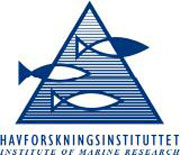 The IMR (www.imr.no/en) is a leading Norwegian institute in development of startfeeding techniques of marine fish. IMR has 19 research groups, among them 6 related to aquaculture and larval fish. At IMR-Austevoll, different production lines for halibut, cod and scallop has been developed since 1978, with a current focus on water quality, fish welfare, larval nutrition and reproductive physiology.
The IMR (www.imr.no/en) is a leading Norwegian institute in development of startfeeding techniques of marine fish. IMR has 19 research groups, among them 6 related to aquaculture and larval fish. At IMR-Austevoll, different production lines for halibut, cod and scallop has been developed since 1978, with a current focus on water quality, fish welfare, larval nutrition and reproductive physiology.
Extensive methods for production of juvenile halibut and cod were developed in mesocosms and ponds more than 20 years ago. Current intensive methods for halibut egg- and yolcsac stages are based on experience achieved during this period. Fish welfare and water quality in larval- and juvenile systems has attained focus due to high rates of abnormal developed juveniles found in intensive cultures.
Tasks inside the project
IMR will participate in WP8, WP9 and WP10. In WP8, their contribution will be related to work with incubation systems for eggs and larvae in the pre-feeding stages. Conduct experiments to find basic larval performance in relation to extermal parameters as light regimes and flow patterns. IMR will also participate in conducting mesocosm experiments with pre feeding stages of larvae, and later perform feeding trials in mesocosms systems.
Relevant experience regarding major tasks
Given their previous experience with international projects the IMR group will be able to contribute in several of the project tasks including rearing systems, water quality, larval welfare and nutrition. IMR has relevant experience in several fish species such as halibut, cod, turbot and ballan wrasse.
Project participants
Dr. Anders Mangor-Jensen, senior scientist and group leader of “Early Life Stages” with experience in larval physiology and marine juvenile fish production.
Dr. Terje van der Meeren, research scientist with long experience in various aspects of startfeeding of marine fish larvae, including startfeeding system, feeding ecology, nutrition and rearing environment and mesocosms.
Torstein Harboe, research sicientist with more than 20 years experience in larval feeding and nutrition, and also in larval rearing system configuration and performance.
Relevant publications
Harboe’s main focus has Mangor-Jensen, A. and Waiwood K.G. (1995). The effect of light exposure on buoyancy of halibut eggs. Journal of Fish Biology 47: 18-25
Mangor-Jensen, A., Lie Ø., Holm J.C., Rosenlund G. and Sandnes K. (1994)Effects of dietary vitamin C on maturation and egg quality of cod Gadus morhua L.. Journal of the World Aquaculture Society 25: 30-40
Mangor-Jensen, A., Harboe,T., Shields, R.J., Gara, B., & Naas, K.E. (1998). Atlantic halibut, Hippoglossus hippoglossus L., larvae cultivation literature, including a bibliography. Aquaculture Research 29, 857 – 886.
Naas, K. and Mangor-Jensen,A. (1990). Positive phototaxis during late yolksac stage of Atlantic halibut larvae Hippoglossus hippoglossus (L.). SARSIA 75: 243-246.
Terjesen B.F., Mangor-Jensen A. and Fyhn H.J. (1998). Ammonia dynamics in relation to hatching in Atlantic halibut (Hippoglossus hippoglossus L.) Fish Physiology and Biochemistry 18: 189-201
Van der Meeren, T. and Naas, K.E. (1997). Development of rearing techniques using large enclosed ecosystems in the mass production of marine fish fry. Reviews in Fisheries Science 5: 367-390.
Van der Meeren T., Mangor-Jensen A. and Pickova J. (2007). The effect of green water and light intensity on survival, growth and lipid composition in Atlantic cod (Gadus morhua) during intensive larval rearing. Aquaculture 265: 206-217
Van der Meeren, T., Olsen, R.E., Hamre, K., & Fyhn H.J. (2008). Biochemical composition of copepods for evaluation of feed quality in production of juvenile marine fish. Aquaculture, 274, 375-397.